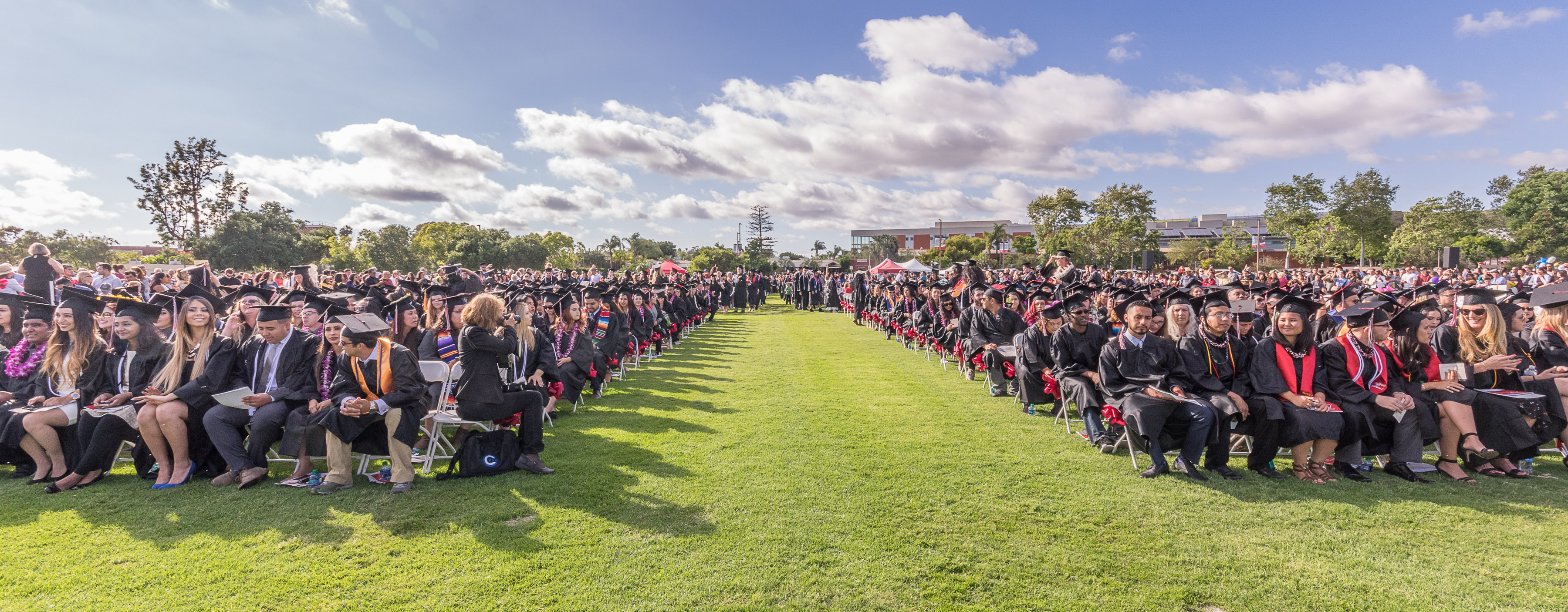Palomar Student-Athlete Transfer Rates Soar
Ninety-five percent of student-athletes at Palomar College are successful in their sophomore year either continuing at Palomar, completing their desired educational goals or transferring. The Athletics Program credits this to the dedication and motivation of student-athletes coupled with the hands-on approach designed to keep student-athletes on track.
Palomar College is among the largest athletic programs in the state, with a combined 22 sports teams averaging 450 participants each year. The student-athletes that participate in this program are a specialized population who are uniquely different to any other student population. While most non-athlete students can self-pace, student-athletes are not afforded that opportunity. Strict regulations of the National Collegiate Athletic Association (NCAA) state students are allowed four years of competition, which must be completed in a five-year period, as measured from the point of full-time enrollment in a post-secondary institution. The additional year allows a student-athlete to complete his or her eligible athletic competition in case of an injury or academic deficiency. While the NCAA isn’t the governing entity over Palomar College Athletics, most student-athletes plan to transfer to universities where NCAA regulations are in place. “From the moment a student-athlete enrolls full time (12 or more credit units in a semester), their NCAA five-year clock begins,” says Palomar’s Athletic Academic Counselor, Steve White.
A heavy academic emphasis is placed on student-athletes beginning at their initial athletic academic counseling appointment. “Ninety percent of the first counseling appointment is focused on academics,” said White. “Student-athletes are held to a higher standard in a shorter amount of time.”
Enrollment in a minimum of 12-units, nine of which must be in academic coursework, is mandatory for participation in Palomar’s intercollegiate athletics program, which is governed by the California Community College Athletic Association (CCCAA). First-time participation in Palomar College intercollegiate athletics requires no other academic standard. Continuing eligibility for sophomores, however, is determined by the successful completion of 24 units (18 of which must be in academic coursework), while maintaining a minimum 2.0 grade-point average, as measured from the semester in which the student-athlete’s first year of competition was conducted.
Resources for student-athletes are abundant. Counseling services are provided for student-athletes by White, whose role is to advocate and advise in academics for student-athletes, provide guidance in the accomplishment of educational goals through the development of a Student Educational Plan, and serve as a liaison between coaches, student-athletes and faculty with any academic concerns that arise.
Academic resources available to student-athletes are in concert with those available to the general student population, allowing for greater success. The student-athlete population is different, in part due its’ high level of motivation to compete. “We understand that student-athletes have an inherent advantage in comparison to non-athletes,” said Director of Athletics, Scott Cathcart. “The greatest advantage our students have is the self-motivation to participate in a program of their choosing, for which they have developed a strong passion”
Most recent data provided by the California Community College Chancellor’s Office shows the following statistics from the 2015-16 academic year.
- Full-time enrollment for both the fall and spring semesters – Athletes 65%; General Students 11%
- Students with a GPA < 2.0 – Athletes 23%; General Students 26%
- Students with GPA 2.0 to 2.49 – Athletes 17%; General Students 11%
- Students with GPA > 2.5 – Athletes 60%; General Students 56%
- Average units attempted – Athletes 30.96%; General Students 12.41%
- Average Successful Units Completed – Athletes 23.57%; General Students 10.58%
- Students who completed less than 24 units – Athletes 47%; General Students 75%
- Students who completed 24-29.9 units – Athletes 21%; General Students 6%
- Students who completed more than 30 units – Athletes 31%; General Students 3%
- Average course success rate – Athletes 77%; General Students 69%
- Percentage of students who’ve taken an English course – Athletes 75%; General Students 49%
- Percentage of students who’ve completed a transfer-level English course – Athletes 77%; General Students 73%
According to Cathcart, the important thing to pull from the statistics is that more student-athletes are staying in school. The success of these students is also important. The hands-on approach the Athletics Program takes involves weekly eligibility checks and grade checks to ensure students remain eligible and on track in their academics. “It is a plain and simple fact,” said Cathcart, “you cannot be an intercollegiate athlete unless you’re a collegiate student first.”
Palomar College’s 2019 softball team is proof the high standards student-athletes are held to are successful. All sophomores on the 2019 softball team are transferring with 100% of transfer careers extended.
Image Sources
- 34775177332_ea9f50e08a_o: The Telescope Newspaper | All Rights Reserved

